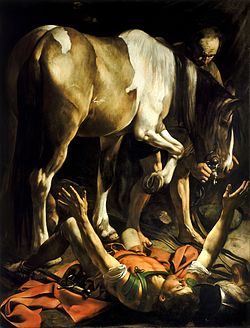
Back التحول إلى المسيحية Arabic Konverze ke křesťanství Czech Bekehrung (Christentum) German گرویدن به مسیحیت Persian Conversion au christianisme French Megtérés Hungarian Perpindahan ke agama Kristen ID 回心 Japanese 기독교로의 개종 Korean Konwersja (chrześcijaństwo) Polish

Conversion to Christianity is the religious conversion of a previously non-Christian person that brings about changes in what sociologists refer to as the convert's "root reality" including their social behaviors, thinking and ethics. The sociology of religion indicates religious conversion was an important factor in the emergence of civilization and the making of the modern world. Conversion is the most studied aspect of religion by psychologists of religion, but there is still very little actual data available. Neurological studies have determined that conversion is not the result of pathology.
Christianity is growing rapidly in the global South and East, primarily through conversion. Different methods of conversion have been practiced historically. There is evidence of coercion by secular leaders in the Early and Late Middle Ages, though coercion as a method has never been approved or even supported by any majority of Christian theologians.
Different Christian denominations may perform various different kinds of rituals or ceremonies of initiation into their community of believers. The primary ritual of conversion is baptism, while different denominations differ with regards to confirmation.
According to a 2001 study by religion professor David B. Barrett of Columbia University and historian George Thomas Kurian, approximately 2.7 million people were converted to Christianity that year from another religion, while approximately 3.8 million people overall were converting annually.[2][3] In the first decades of the twenty-first century, Pentecostalism is the largest and fastest growing form of Christianity,[4] this growth is primarily due to religious conversion.[5][6]
- ^ Acts 9:1–22
- ^ Barrett, Kurian & Johnson 2001, pp. 4, 360.
- ^ Rambo & Farhadian 2014, p. 59.
- ^ Daughrity 2010, pp. 14–15.
- ^ R. G. 2017, p. n/a.
- ^ Makabenta 2017, p. n/a.
© MMXXIII Rich X Search. We shall prevail. All rights reserved. Rich X Search